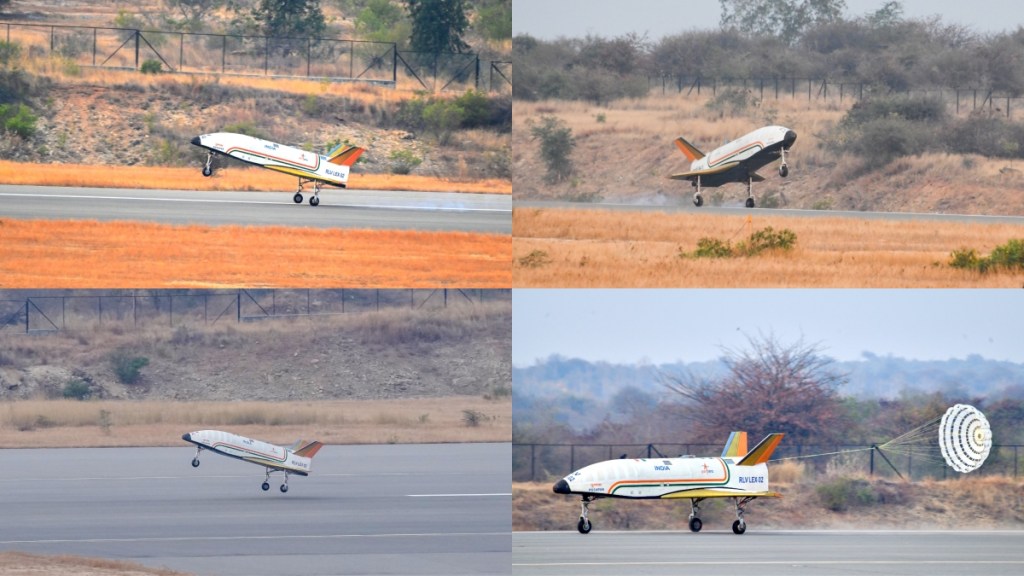The Indian Space Research Organisation (ISRO) has done it again. Continuing its streak of success, the space agency today carried out a successful landing mission for its Reusable Launch Vehicle (RLV) LEX 02, “Pushpak” from the Aeronautical Test Range (ATR) in Chitradurga.
Announcing the landing on X, formerly Twitter, the agency wrote, “ISRO nails it again!…Pushpak (RLV-TD), the winged vehicle, landed autonomously with precision on the runway after being released from an off-nominal position.”
In a release attached to the post, ISRO said that the major milestone was achieved in the area of Reusable launch vehicle (RLV) technology with the RV LEX-02 landing experiment, the second in the series. The RLV-LEX-01 mission was conducted last year.
RLV-LEX-02 Experiment
The RLV-LEX-02 showcased the autonomous landing capabilities of the Reusable Launch Vehicle (RLV) from non-standard initial conditions upon release from the helicopter, ISRO said. The winged vehicle underwent more challenging maneuvers, correcting both cross-range and downrange dispersions to land autonomously on the runway. An Indian Air Force helicopter lifted lifted Pushpak to an altitude of 4.5 km before release.
Post the release at a distance of about 4 kilometers. Pushpak autonomously navigated towards the runway while making cross-range corrections. It executed a precise landing on the runway, utilising its brake parachute, landing gear brakes, and nose wheel steering system to come to a stop.
ISRO said, “This mission successfully simulated the approach and high-speed landing conditions of RLV returning from space. With this second mission, ISRO has re-validated the indigenously developed technologies in the areas of navigation, control systems, landing gear and deceleration systems essential for performing a high-speed autonomous landing of a space-returning vehicle.”
It added that the winged body and all flight systems utilised in the RLV-LEX-01 mission were subsequently reused in the RLV-LEX-02 mission following proper certification and approvals.

